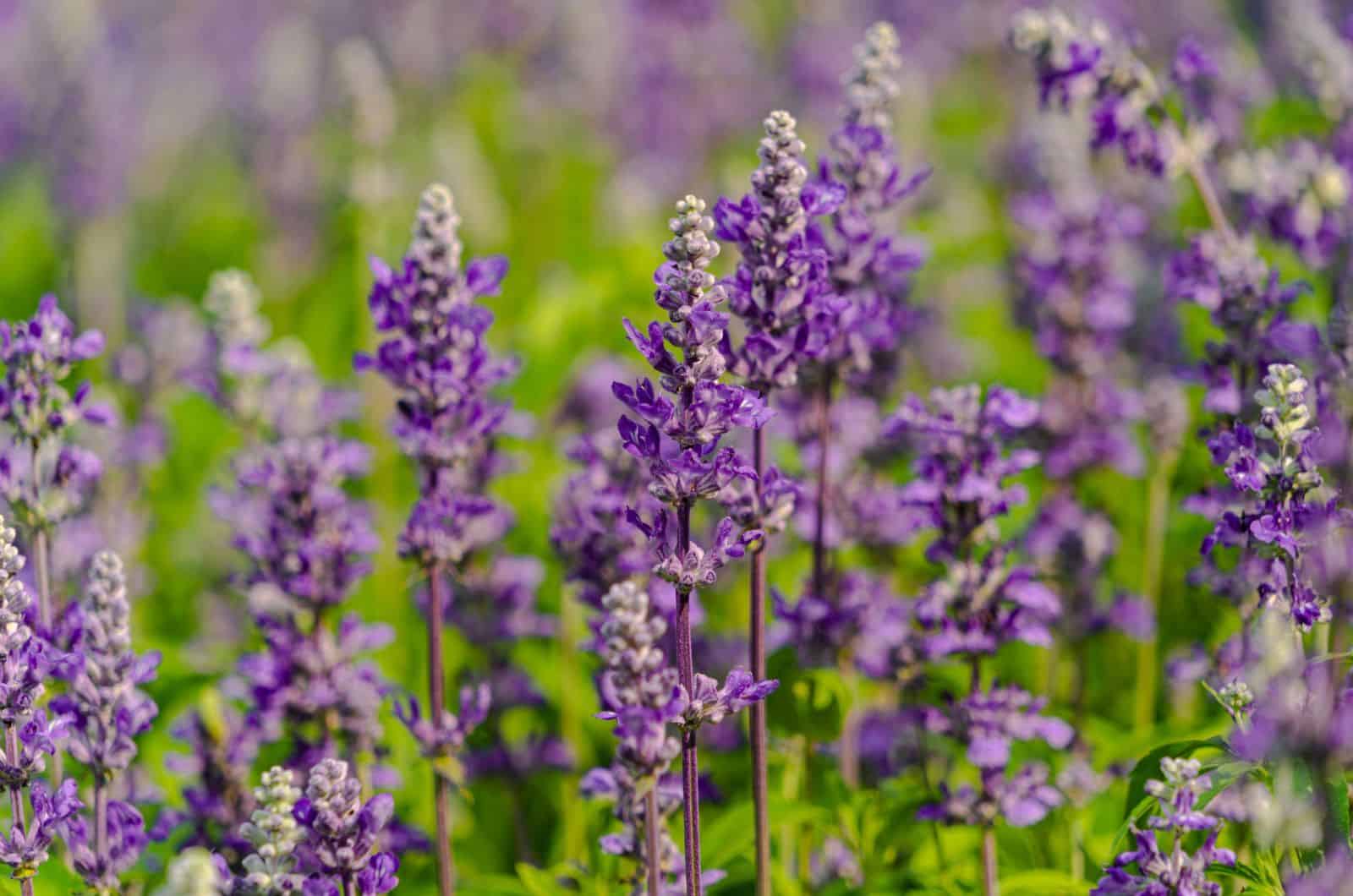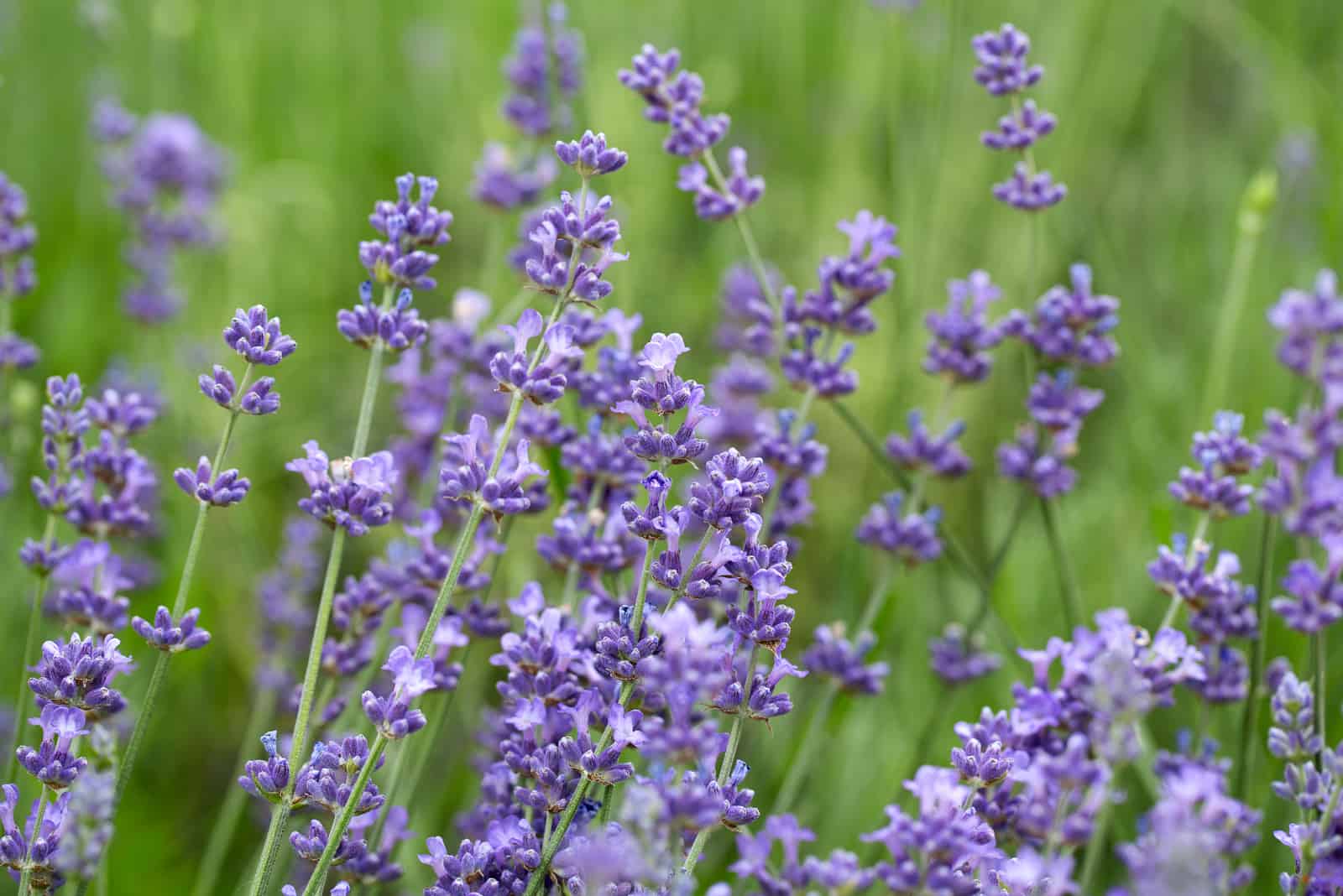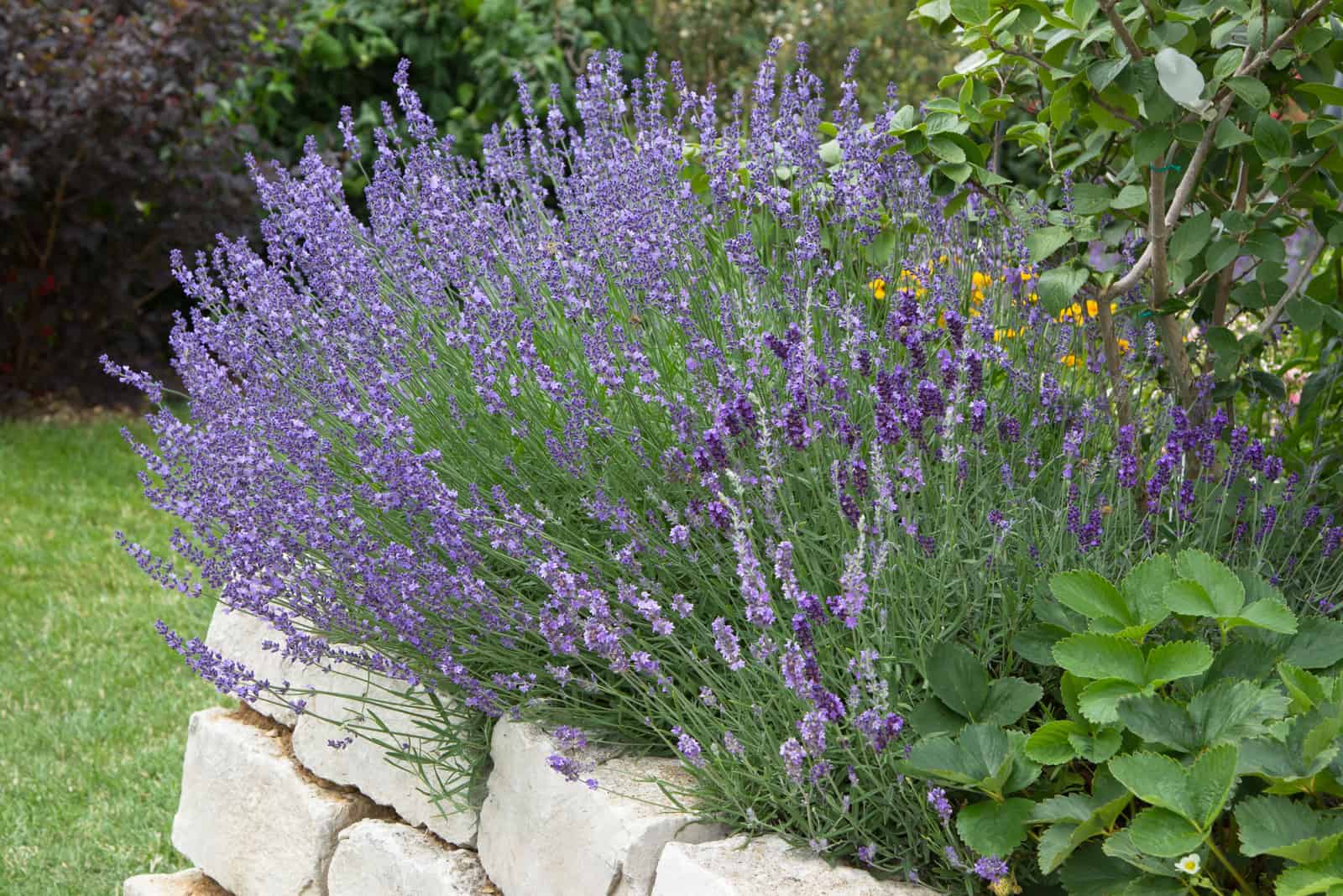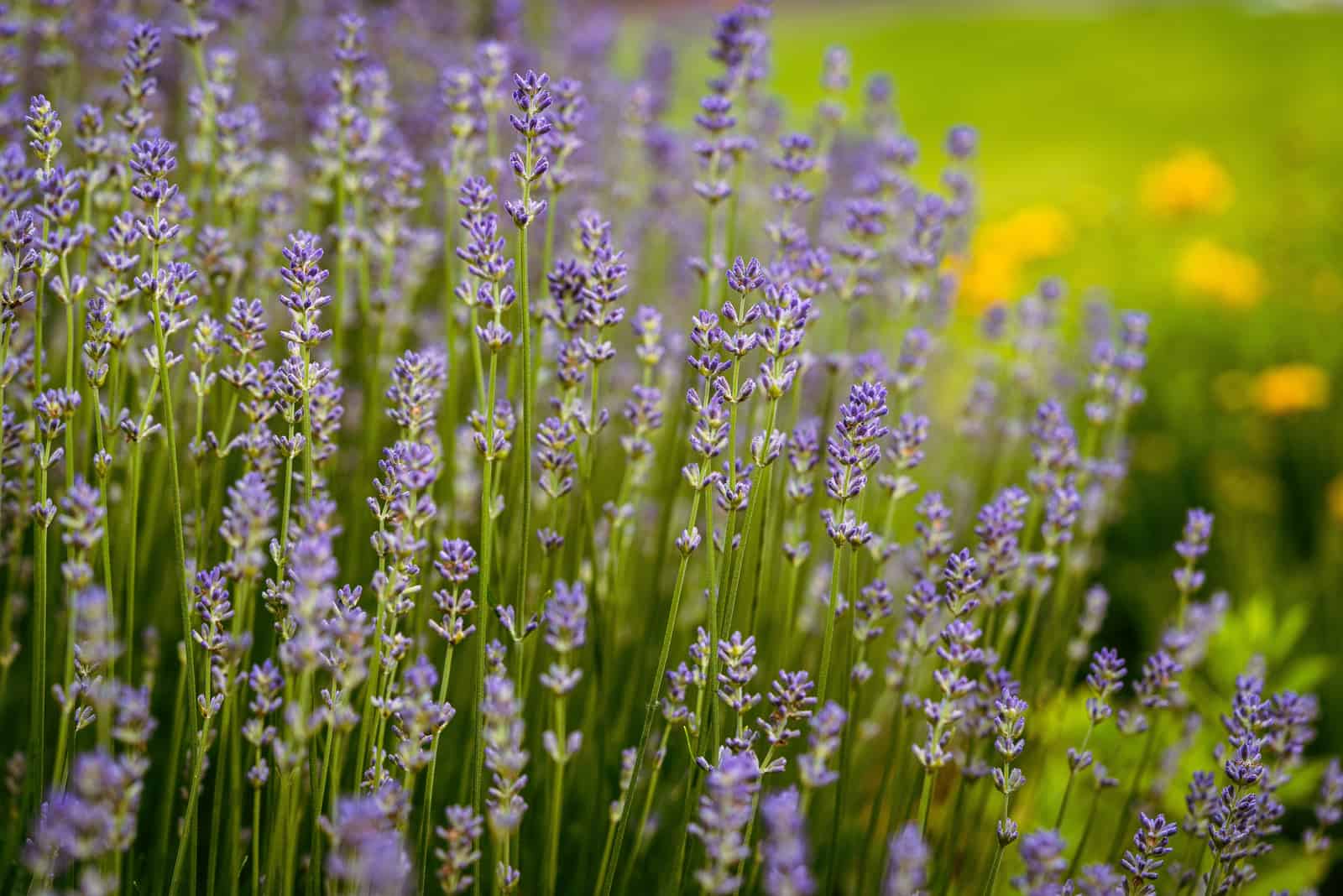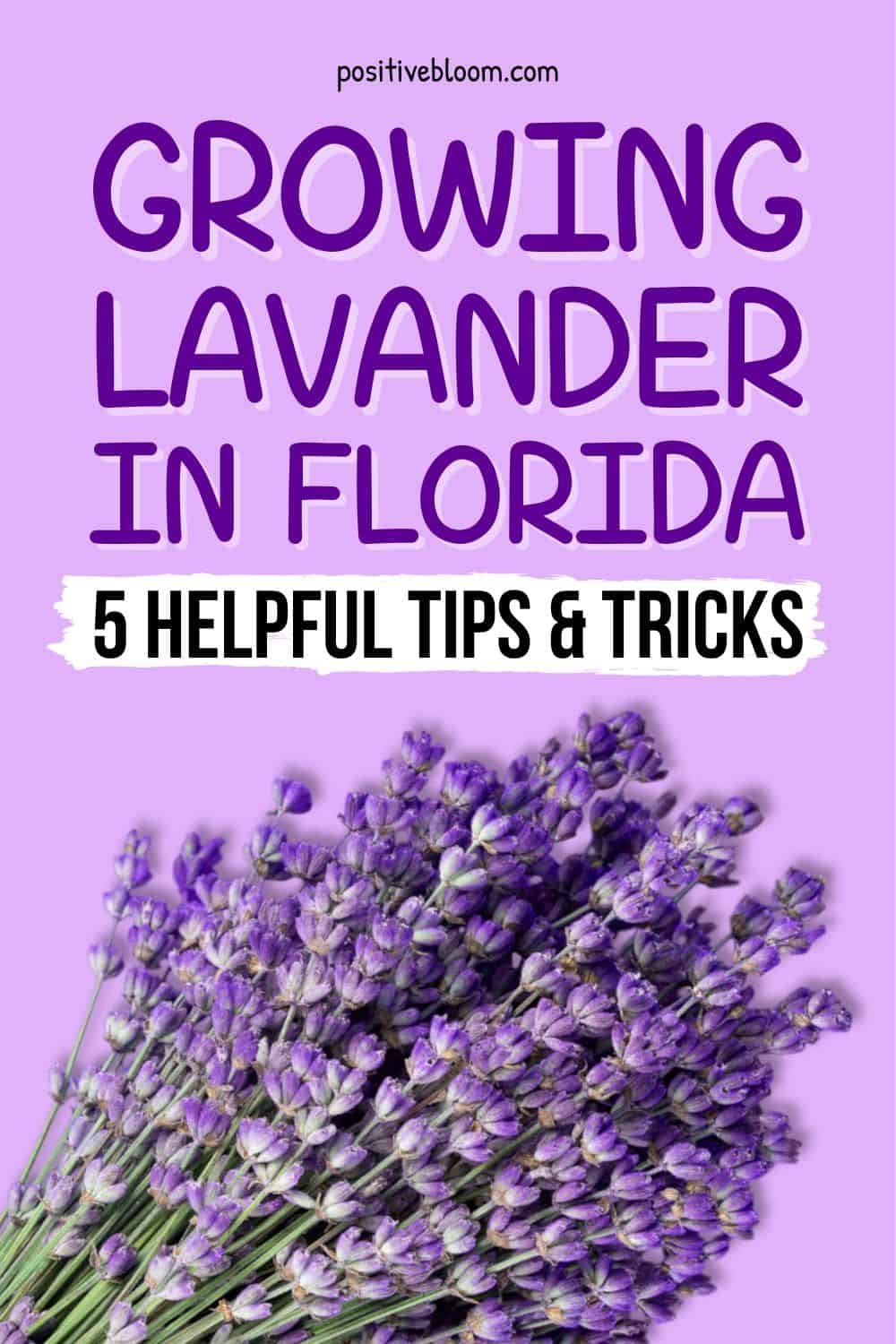Gardeners around the world enjoy the scent of lavender in spring and summer, but how do they grow this fragrant shrub?
It needs plenty of sunlight and just a little bit of water to thrive, so it can’t be that hard, can it?
Though this subshrub is a low-maintenance plant, the problem arises when people consider growing lavender in Florida and other tropical and subtropical climates.
These aren’t ideal environments for this plant, so we need to pay close attention to our growing techniques.
This article has five tips for growing lavender in Florida or any other place in the coastal South, so you can enjoy a refreshing cup of lavender lemonade wearing homemade, natural mosquito-repellent any time you like!
5 Tips For Growing Lavender In Florida
We will first discuss the best ways of growing lavender in Florida. With these care tips for lavender, you will be able to grow and enjoy this plant just like your friends from Texas.
The key thing is to choose the ideal type of lavender and find the best location for it.
Lavender plants need soil with good drainage and only a little bit of water, so you should bear this in mind when planting this shrub.
Let’s begin!
1. Choose The Best Lavender Type
There are many different lavender varieties that all prefer different weather conditions. This section will discuss the four main types, which will take your breath away whenever you happen to gaze upon their mesmerizing purple flowers.
Make sure you learn when different types of lavender bloom so you can choose the varieties that will decorate your landscape for most of the year.
English Lavender
English lavender, also known as Lavandula angustifolia, isn’t the best option to plant in Florida.
The Sunshine State isn’t called that for no reason; the Department of Agriculture says that there are four USDA hardiness zones in Florida – 8-11.
English lavender can handle the temperatures in USDA zones 5-9, so you could grow it in the northern parts of this state. However, if you live in central or southern Florida you should choose a different variety, such as French lavender, because it is more adapted to higher temperatures.
It is one of the hardiest varieties, can endure colder weather, including winter frosts, and it usually grows between 2-3 feet tall.
English lavender usually flowers in the early summer and stays in bloom for about a month, so you’ll have plenty of time to enjoy its scented blossoms if you’re lucky enough to live in the northern parts of Florida.
Hidcote and Munstead are cultivars of English lavender that will adorn your garden with blue flowers, but they cannot tolerate the high temperatures in southern Florida.
French Lavender
French lavender is the best variety to grow in Florida or any other region with hot summers because it thrives in USDA zones 8-11.
Its scientific name is Lavandula dentata, and it can grow 3 feet or taller with the proper conditions.
The immortal lavender scent is somewhat less sweet than in other varieties, but it can still remind you of childhood holidays in Provence or Tuscany. Its fragrance is pure and even reminds of rosemary.
The unique scent isn’t released through lavender flowers alone. Lavender exudes its signature fragrance through its toothed leaves as well, so your home can smell of lavender all year long.
Spanish Lavender
Spanish lavender, also known as Lavandula stoechas, is another excellent choice for central and southern Florida as it thrives in USDA zones 6-11.
This variety doesn’t mind high humidity that much, and if you ensure suitable airflow and limit the watering, it will do just fine.
The purple bracts of this Spaniard are almost a trademark. Whenever you picture lavender, this shade of purple is what you’d imagine.
Some cultivars of this species can be pink or even white. ‘Ballerina’ is a variety with white or light pink flowers, while ‘Anouk’ has that signature lavender-purple color.
The cultivars of Spanish lavender can reach heights of 1-2 feet (30-60cm).
The fragrance of this variety is not something we’re all used to. It has a slightly antiseptic scent that may take you to a pinewood if you close your eyes.
Lavandin
Lavandin is a hybrid cross between Portuguese and English lavender, which botanists refer to as Lavandula x intermedia. It is best grown in USDA zones 5-9, but can withstand hot and humid conditions quite nicely.
Different cultivars of this hybrid have various features. However, everyone can agree that lavandin is the lavender with the most potent scent!
Lavandin Grosso has beautiful violet flower spikes that can reach up to 6 inches (15 cm) high. Provence has slightly darker flowers (pale purple) and one of the strongest fragrances, whereas Impress purple has unique deep purple flowers.
The Seal has violet-blue flowers situated on leafless stems that can grow up to 12 inches (30cm) tall.
These cultivars usually bloom once a year, but the flowers last until late summer or even early fall, which is why growers around the world plant them in their gardens.
They’re also perfect for humid climates!
Goodwin Creek Grey
Another hybrid variety is the Goodwin Creek Grey, which is a hybrid between French and wooly lavender (l. lanata).
Just like French lavender, it thrives in higher temperatures, and Central Florida is actually one of the places where it can best adorn herb gardens with its attractive silvery-green leaves that create quite a contrast to rich violet-purple flowers.
This variety can grow up to 3 feet (90cm) tall and exudes a highly fragrant scent.
2. Find The Best Location
Now that you know some of the popular lavender varieties and have chosen the one perfect for your region, you can start looking for the ideal location to plant lavender.
Knowing more about lavender’s growth cycle will help you choose the right spot for it at different stages of development. Too much sunlight can burn the young, delicate leaves, but too little sunlight will lead to leggy plants.
But one thing is certain: lavender needs direct sunlight to grow and develop, so you should choose their new spot accordingly.
Lavender requires full sun to thrive, but it doesn’t specify which sun it needs – morning or afternoon. As temperatures in Florida are quite high, you should plant lavender where it can get plenty of sunlight in the earlier half of the day and then be protected in the afternoon.
Harsh sun can scorch the leaves of this shrub, but it still needs at least 6-8 hours of sunlight each day.
As Florida is a humid place, you should ensure there’s enough air circulation, so your plants don’t start rotting.
Ensure there’s at least three feet between your plants, which will help dry the leaves after the rain and prevent fungal diseases.
If you’re new to planting lavenders, I’d recommend growing them in containers so you can move them around and experiment with different locations before you find the one with the best amount of sunlight, airflow, etc.
3. Prepare The Soil
One of the most important things to take care of before planting lavender is soil preparation. Lavender thrives in slightly alkaline soil, with soil pH between 7.0-6.0.
However, there are certain lavender varieties that can survive in mildly acidic soils as well, and one of them is a cultivar of lavandin known as ‘Phenomenal.’
Lavender grows well in somewhat dry, sandy soils, but it doesn’t mind heavier soils as long as you don’t water it too often.
The key to growing this shrub is a well-draining medium, so add some perlite, sand, or vermiculite to your favorite potting mix.
Compost is another way of improving drainage, but it’s not advisable in this case because lavender thrives in less fertile substrates. However, if you’re afraid you’re not doing everything you can for your fragrant shrub, you can always plant it in a raised bed, which drains water more quickly.
Finally, mulch all your lavender plants with gravel or oyster shells to keep them protected in winter and cool in the summer. We always use lightly colored mulch because it’s said to reflect sunlight and keep your plants safe.
4. Adjust Watering
Adjusting your watering technique is incredibly important because lavender is a drought-tolerant plant that can easily get overwatered, and believe me – there’s nothing worse than noticing the first symptoms of overwatered lavender.
Florida is also known as the wettest state in the US, so you won’t have to irrigate established lavender at all. However, there are rainless periods in the Alligator State, and that’s when you’ll have to water your purple shrubs.
Of course, you should always check the soil before watering, and if it isn’t dry, there’s no need to add more water.
You need to make sure that you don’t wet the leaves as humidity is high anyway, so there’s no need to add more moisture. Water these plants as close to the soil as possible.
You can even install a drip irrigation system because young plants need regular watering before they get stronger, and you won’t add any extra moisture to the leaves.
5. Pruning
The last thing that can help you grow lavenders in Florida (or anywhere else for that matter) is regular pruning. Lavender plants need to be pruned at least once a year, preferably in early spring, once the weather gets a bit warmer and new growth starts appearing.
We prefer trimming these plants in spring because you never know what the weather will be like, and it may harm your plants.
The important thing is to cut back approximately 2/3 of the entire plant, but don’t cut the main, woody stems as that may weaken it.
Also, ensure there’s enough greenery left on it so that it can photosynthesize and produce the food and energy it needs for further development and growth.
You should try to make a dome shape because it not only looks attractive, but also ensures that the sun can get to every part of the plant and there’s proper air circulation, which prevents the development of fungal diseases.
Simply make the inner, woody stems longer, and shorten the outer branches to get the desired look.
Always use sterilized equipment because you don’t want to transfer fungal spores or bacteria onto your healthy plants.
You can also trim your lavender plants after flowering to encourage further blooming.
Here are some tips about pruning lavender in spring:
How To Grow Lavender In A Humid Climate
One of the fundamentals of growing lavender in humid climates is leaving enough space between plants so that air can properly circulate.
Without this, the leaves will begin to rot, and the entire plant will succumb to humidity.
You need to think outside the box; it’s not just the vicinity of other plants that’s the problem, it’s buildings as well.
Therefore, don’t plant this shrub too close to your home, tool shed, or any other construction you may have on your property.
Also, make sure that it gets plenty of sunlight so the moisture can evaporate more quickly. Consider planting it on the southern or western side of your garden.
However, the east-facing side isn’t that terrible, and you can always plant lavender in a container and move it around when necessary.
Well-draining, sandy soil is the key, but simply adding any type of soil isn’t necessarily a recipe for success. Research different types of sand for gardening and how to use them so that you can provide your lavender plants with the best growing conditions possible.
The last thing is to adjust watering, and only water them if there hasn’t been any rain for a while.
These tips can help you grow lavender in any humid climate, whether you’re in Baltimore, Georgia, or Florida.
Lavender Application
Lavenders are very popular plants and are used to make essential oils, soaps, potpourris, perfumes, and even bug repellent.
You can use it pretty much everywhere – even in the kitchen as a spice or in a sachet.
Come to think of it, there are many plants that can be used in the same way, such as Russian sage.
However, there are certain differences between Russian sage and lavender that can help you decide which one to grow.
Let’s look more closely at all the different ways you can use lavender in your everyday life.
Soap
Lavender oil can be used to make soap. Not only do these soaps smell incredible, but they also have exceptional healing properties.
Lavender is known for its antiseptic and anti-inflammatory benefits, and it can reduce scarring and help with sunburn.
Lavender soap has many benefits, from reducing skin inflammation and irritation to helping with arthritis and rheumatism.
Perfume
Many famous names in the perfume industry, such as Tom Ford, Gucci, and Chanel, have used lavender scents in their fragrances.
However, if you grow these flowers in your home, you don’t need expensive brands. You can simply create a sachet, and your entire house will smell of lavender.
Insect Repellent
Lavender works well as an insect repellent. If you hate buying these to stop bugs from eating your clothes, you can always put lavender flowers in your closets and around the house.
Lavender also works as a mosquito repellent, and below you will find a recipe to make it yourself.
It’s pretty easy!
All you need is lavender essential oil, witch hazel, and a spray bottle.
Mix ten drops of lavender essential oil with 100 drops of witch hazel and put it in a spray bottle. Shake until combined, and you’re all set for a camping trip!
Sachets
To make a lavender sachet, all you need to do is buy a small linen bag and fill it with lavender flowers. You can also add a few drops of lavender essential oil to increase the fragrance.
You can put these sachets pretty much anywhere. You can use it in your car as an air freshener, put it in your gym bag to eliminate unpleasant smells, or carry it in your handbag and take a sniff or two to relax when you are feeling stressed.
Home remedies
Lavender essential oils have many health benefits. They are known muscle relaxants and have a calming effect.
They also appear to have antifungal and antibacterial properties. Their smell can help with anxiety, stress, insomnia, and even depression.
French lavender is also used in Murcia as a herbal medicine for stomach aches.
Cooking
There are many dishes you can spice up with lavender. It goes well with rosemary, oregano, marjoram, and savory.
You can use it when making chicken, turkey, or lamb and even add it to fish dishes, like salmon or tuna steaks.
You Asked Us
There are so many things about lavender still to learn, and they simply cannot fit in just one article.
However, we managed to find some room for a few of the most frequently asked questions, and we’ll answer them below.
What should I do if my lavender plant gets sick?
As soon as you notice that something isn’t right with your lavender plant, you should separate it from the rest of your plants and examine it more closely.
Two of the most serious diseases that infect this shrub are Alfa Mosaic Virus and Shab. Alfa is spread by aphids, and it is highly infectious and deadly.
If you notice patchy, yellow, contorting leaves, you should act immediately. Dig up all the infected plants and burn or throw them away in a non-recyclable bin. Also, wear gloves and be sure your clothes don’t come into contact with the plants.
You don’t want to spread the infection even more!
Shab is a fungal infection that destroys stems. It is extremely rare, but you should watch out for it nevertheless. If you notice withering of the plant and brown branches even though your plants get plenty of water, you should dig them up and burn them.
Lavender loves arid climates, and in humid regions, they can easily fall victim to powdery mildew and root rot if you aren’t careful while watering.
You can prevent these fungal infections by separating the plants to improve air circulation around them. Also, don’t overwater!
How long does it take to grow lavender in Florida?
It takes around two or three years for lavender to mature in Florida.
The good news is that you can start harvesting it the first year after planting, although the flowers will be scarce.
The second year brings more flowers, and your yield will be more prolific. That said, you don’t have to harvest lavender; you can simply admire its captivating blossoms and enjoy its relaxing scent.
Final Word
This article brought you five fantastic tips for growing lavender in Florida, and one of the most important things is choosing the best variety for your region.
Even though English lavender is the most famous, it’s not the best choice for our hot and humid summers. However, there are some hybrid varieties, as well as French and Spanish lavender, that simply thrive in such conditions, so you can grow this aromatic herb no matter where you live.
We also included some tips for growing lavender in any humid climate (not just in Florida) and presented some creative ways of using the flowers, leaves, and stems in your everyday life.
Enjoy the new addition to your herb garden, and until next time!
Like this post? Share or pin it for later!

